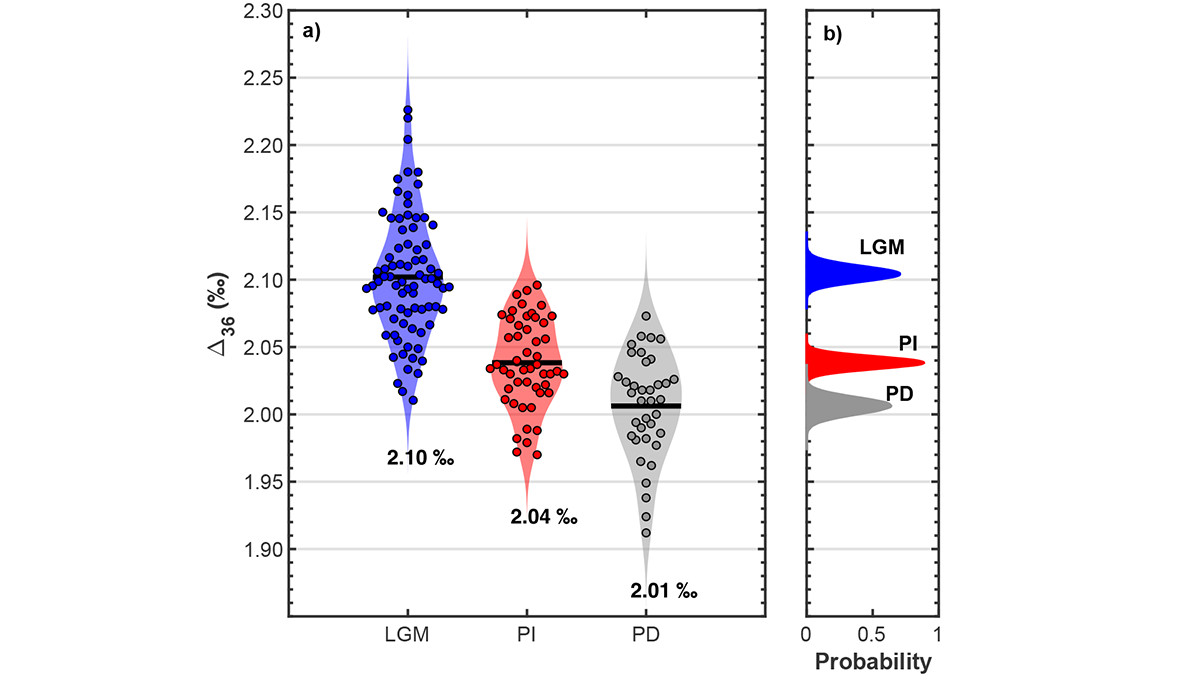Source: AGU Advances
Editors’ Highlights are summaries of recent papers by AGU’s journal editors.
While paleoproxies show cooler surface temperatures during the last glacial maximum (LGM), it is also important to know how the atmospheric lapse rate changed, i.e., the degree to which temperatures also changed in the upper atmosphere. Currently available high altitude paleotemperature proxies rely on mountain glacier changes that do not provide a global signal and infer larger cooling than predicted by climate models. Banerjee et al. [2022], see also Viewpoint by Seltzer and Tyne [2022], provide a new global-scale constraint for temperature change in the upper troposphere based on small variations in the proportion of O2 present as 18O18O. The clumped isotope value is largely set by temperature-dependent isotope exchange reactions with O3 that have a maximum influence at 10-11 km altitude. By analyzing O2 trapped in ice cores from the LGM, the team found a minor steepening of the global lapse rate, in accord with climate model predictions.
Citation: Banerjee, A., Yeung, L., Murray, L., Tie, X., Tierney, J. & LeGrande, A. Clumped-isotope constraint on upper-tropospheric cooling during the Last Glacial Maximum. AGU Advances, 3, e2022AV000688. https://doi.org/10.1029/2022AV000688
—Susan Trumbore, Editor in Chief, AGU Advances

